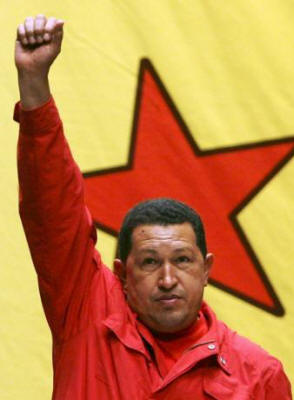|
Mahdi Darius Nazemroaya
May 01, 2013 from GlobalResearch Website
The answer seems to be that the trend towards regional autonomy and populism in what academics would call a question of, either imagined or real, multi-dimensionality and agency will continue.
This is more than just about the so-called “pink tide.” It is about anti-hegemonic alliances that have brought different groups together in Latin America.
The work of
Antonio Gramsci, the Italian activist
and the leader of the Factory Councils in Turin, can help us
conceptualize this process. Not only did Gramsci inspire Chavez, but his
ideas can be used to explain these alliances.
From the start, he burst into Venezuela’s political scene with a mixed coalition of activists, a spectrum of leftists, career soldiers, and small capital.
He tried to bring the mosaic of different peoples that represented Venezuelan society together formatively. Even when the middle class was being distanced from his Bolivarianism as it radicalized, Chavez admitted that it was of high importance to align with them.
As part of a larger cultural project, this
included communicating with them through a politics of what the sociologist
Stuart Hall would call “articulation.”
This bloc building process is part of a continuous war of maneuver and continuous war of position for hegemony. In June 2007, Chavez would even refer to his Bolivarian Revolution in Gramscian terms as a bloc building process during a speech he delivered to his supporters.
He would tell his supporters that they were
witnessing the formation of a new historical bloc and that a historic crisis
was unfolding with the dying of the old, capitalist society of the Republic
of Venezuela (or the Venezuelan Fourth Republic) and the formation of the
new, socialist society of the Bolivarian Republic of Venezuela.
In “Some Aspects of the Southern Question,” Gramsci emphasizes that the factory workers movement in Northern Italy could not position itself for the leadership of the Italian state without the creation of a historic bloc with the peasants of Southern Italy.
This alliance was the real “magic formula” for
taking over the state according to Gramsci and not a division of land and
estates for the peasantry as the socialists claimed.
After the defeat of what is called the Venezuelan First Republic, a Venezuelan Second Republic would be established in 1814.
This too would be defeated, because the poor and slaves would oppose the republicans. Bolivar would realize that slavery had to be abolished and that he needed to form a historic bloc with the slaves and lower strata to become successful.
In the case of Chavez and other socialists in
Latin America this has also included sectors of local capital.
This includes an indigenization of and a localization of political decision making in Latin America. To a degree, the transformations in Venezuelan society can be viewed in microcosm as the transformations in Latin America.
Behind this transformation is a populist drive
aimed at establishing regional autonomy for both socialist movements and
local capital, which also explains the strange alliances of Latin American
governments that support neo-liberalism, like Argentina and Brazil, with
Venezuela.
An example is the Honduran President Jose
Manuel Zelaya’s alliance with Venezuela and ALBA, even though Zelaya was
relatively right-wing. This again is tied to the common platform of regional
autonomy that is serving to
unit left-wing and right-wing governments in Latin
America.
This is why both adopted historic bloc building agendas regionally and internationally.
Both realized that a broader struggle or broader
struggles were being reflected locally and that networking with others
struggling against the same enemy was important. This is what got Bolivar to
get the British to be neutral and what has led to Venezuela’s modern
alliances with China, Belarus, Iran, and Russia.
In 2005, the humiliation of the US government at
the Mar del Plata Summit of the Americas through the rejection of the
Free Trade Area of the Americas (FTAA/ALCA) is an example of the
combined success of bloc building and the rising demand for regional
autonomy by Latin America’s socialist movements and capital.
This struggle for power, which sits at the heart
of the Gramscian notion of hegemony, is also tied to a cultural and
educational project that needs the intelligentsia. The media and
intellectuals are important parts of this.
This too has Gramscian contours.
Gramsci believed that every person through their faculty of reasoning was an intellectual and that there was no such thing as a non-intellectual.
What defines an intellectual in the Gramscian sense is an intellectual’s immediate social function as a professional or specialist in a society.
Moreover, he categorized intellectual within a typology of two: organic and traditional.
Thus, organic intellectuals play important roles
in the process of establishing hegemony or creating anti-hegemonic movements
as functionaries of a specific group and its interests. It is through them
that the dominant ideology in a society is constructed.
Gramsci wrote that it was of importance to break the bond between the intellectuals and peasantry in Southern Italy, because the traditional intellectuals deceitfully kept the peasantry passive and in check under capitalist exploitation for the big landlords, banks, and North Italian capital.
Chavez’s Bolivarian project has also tried to do
this.
This uprooted the articulation of the old elite
just enough to allow Chavez to break their ideological dominance in
Venezuelan society. This has additionally polarized Venezuelan society, as
two cultural projects are competing for hegemony in society.
Hate or love the late Hugo Chavez, he has served as a vanguard for Latin American autonomy and helped countries like Argentina pay off their debts to the International Monetary Fund (IMF).
The process he led in Venezuela has allowed much of Latin America to marshal itself against Washington.
|

